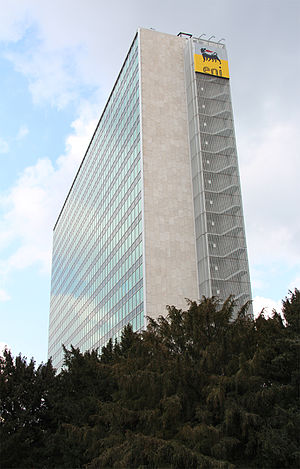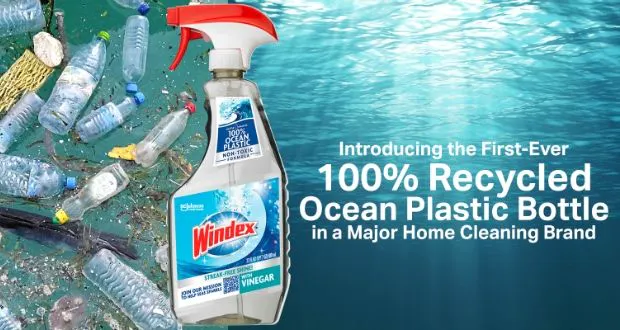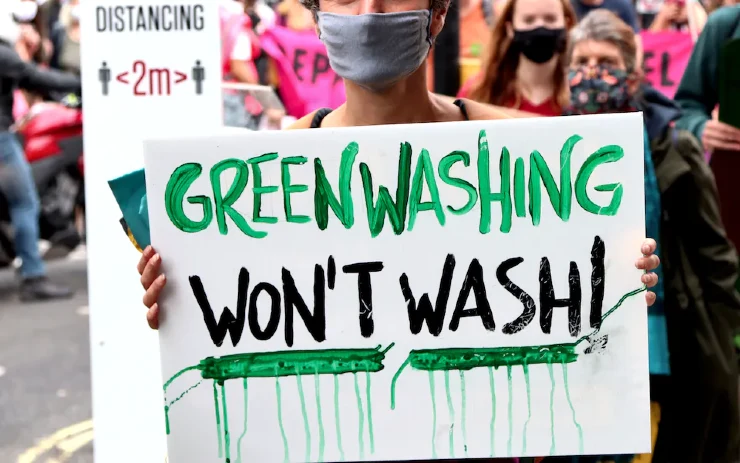Alright, let’s dive into the tricky world of greenwashing! You know, it’s like that cousin of “whitewashing” who likes to play eco-tricks on unsuspecting folks. But before we get into the nitty-gritty, let’s take a trip down memory lane and explore the origins of this term.
Back in the day, “whitewashing” meant slapping a coat of whitewash (a budget-friendly material) on something to make it look all pearly white.
You might remember Tom Sawyer’s ingenious scheme of getting his buddies to whitewash that picket fence for him. Sneaky, huh? But here’s the catch: whitewashing was a cheap way to paint, not disclosing the fact that it wasn’t top-notch paint. It was a money-saving move for those who couldn’t afford the fancy stuff.
Fast-forward to the political arena, and “whitewashing” became a sassy way to call out politicians for hiding unpleasant truths. You know, like when they’d cloak scandals with clever words to make them disappear. It was all about covering up and pretending nothing bad ever happened. Not cool, right?
Now, let’s shift our attention to “greenwashing.” Think of it as the environmentally-conscious sibling of whitewashing. It’s when companies, products, or initiatives try to divert attention from the real environmental issues at hand. Sneaky marketers, I tell ya!
In 1999, “greenwashing” officially made its grand entrance into the Oxford English Dictionary. The definition? Disinformation spread by organizations to create an eco-friendly image while sneaking in their own agenda. Picture it as a green façade hiding something fishy behind the scenes. Not exactly trustworthy, if you ask me.
So, let’s explore some examples of potential greenwashing scenarios. Brace yourself!
Ever encountered those hotel towel cards? You know, the ones telling you to reuse your towels to “save the environment”? Sounds noble, right? But here’s the truth: the hotels pushing this practice often have their own little scheme.
By reducing towel laundry, they save money on water and detergent. Sure, it’s good for the planet, but let’s not forget it’s also good for their wallets. Sneaky green, indeed!
Another classic move is paperless billing. They make it sound all eco-friendly, but guess what? It’s a win-win situation for them, too. By going paperless, companies save on printing costs and postage. Sure, it saves trees and reduces waste, but let’s not ignore the cost-cutting motives. Green dollars, anyone?
Now, let’s talk reusable grocery bags. They’ve become a symbol of eco-consciousness, right? Well, not so fast! Some companies slap their logo on these bags, making you think they’re the heroes saving the planet. But in reality, they might be neglecting other areas where their environmental impact is more significant. It’s like saying, “Look, we care! But please ignore that huge factory spewing toxins into the air.” Sneaky tactics, my friends!
Singapore Used Children To Greenwash Natural Gas
Singapore’s Energy Market Authority used children to talk about the city-state’s main source of power: natural gas. “We need electricity to power many things. Lights, air-con, even the fridge, so I can eat my favorite ice-cream!” said one of the children. “And to produce electricity, we use natural gas. Natural gas is the cleanest fossil fuel around. It gives out less carbon dioxide than coal when used for producing electricity,” said another.
Not everyone agreed!
Industry experts, including Assaad Razzouk, the chief executive of renewables firm Sindicatum, were not impressed.
Exposing Greenwashing Tactics: Beyond the Surface
Alright, let’s keep unraveling the mysteries of greenwashing, my friends. We’ve covered hotel placards and paperless billing, but now it’s time to dive into another example that’s been giving us a green runaround—grocery bags!
Picture this: You stroll into a grocery store, ready to fill up your cart with goodies. But lo and behold, they no longer offer the convenience of paper or plastic bags. Instead, they urge you to bring your own reusable grocery bags. Sounds eco-friendly, right? Well, let’s take a closer look.
Sure, by ditching disposable bags, the store reduces the number of wasteful sacks piling up in landfills. It’s a step in the right direction, no doubt. But here’s the sneaky part—they also conveniently reduce their own costs by no longer providing bags. Whoa, green meets savings!
So, what’s the catch? If the grocery store’s only environmental initiative revolves around this bag saga, it’s time to raise an eyebrow. They claim it’s all about the environment, but it conveniently aligns with their bottom line. Hmmm, smells a bit like greenwashing to me!
Let’s be clear, though, it doesn’t mean these organizations aren’t environmentally conscious or taking genuine steps towards sustainability. It’s just that these specific actions alone don’t make them eco-warriors. We need to look beyond the surface and see if they’re truly committed to making a positive impact.
But wait, there’s another twist in this tale! Sometimes, companies implement these measures not because they want to, but because they have to. Yep, regulations and activists can be powerful drivers of change. In some places, plastic bags have been banned by law, forcing stores to adopt greener practices.
So, in those cases, it may not be entirely their choice to go green. Pressures from regulations and passionate activists have nudged them towards environmental responsibility.
Eni, the Italian oil giant, became the first company in the country to face legal action for greenwashing. The authorities slapped them with a hefty €5 million fine (around US$5.94 million) for claiming that their palm oil-based diesel was environmentally friendly.
Eni had been touting their “green” Eni Diesel+ fuel as eco-friendly, claiming it saved fuel and reduced air pollution. Turns out, that wasn’t entirely true. The Italian advertising watchdog found that the campaign intentionally misled consumers.
In response to the ruling, Eni had to end the campaign and promised never to use the word “green” to describe their motor fuels again. This incident sparked a wider conversation in Europe about whether biodiesel can genuinely be considered eco-friendly.
The European Union has already taken action, planning to phase out palm oil-based biodiesel by 2030, citing the crop’s connections to deforestation.
Italian Oil Giant is First Company in Italy To Be Fined For Greenwashing

Decoding Greenwashing: Separating Fact from Fiction
Let’s dig deeper into the art of spotting greenwashing, folks. We’ve covered some sneaky tactics, like hotel placards and paperless billing. Now, let’s unravel the final piece of this puzzle—how can we distinguish greenwashing from genuine environmental efforts? Buckle up!
Here’s the deal—when you come across a green ad, don’t just take it at face value. Take a moment to investigate the company as a whole. Can you find additional information about their sustainable practices on their website, for instance? That’s a good place to start. Check if they have a comprehensive environmental story that governs their entire operation. It’s time for a good ol’ gut check!
Now, here’s the million-dollar question: Are their claims believable? Can you, as a moderately eco-conscious individual, back up their green claims? If not, it’s time to raise an eyebrow and be skeptical of what they’re saying. But fear not! You can do a quick fact-check by simply Googling the company’s name along with the word “environment.” This little search can lead you to critical assessments and shed light on whether their claims hold water.
Now, let’s go beyond the surface, my friends. When analyzing a greenwashing claim, consider two crucial aspects: accuracy and meaningfulness.
First, ask yourself if the claim accurately represents the environmental impact of the action they’re taking. Are they being deceptive or misleading? Accuracy matters!
Secondly, evaluate if the claim is truly meaningful. Even if it’s factually accurate, does it make a tangible difference in the grand scheme of things? Is it just a tiny drop in the ocean of their overall practices? We need to see their commitment extend beyond a mere marketing ploy.
Lucky for us, back in 1998, the United States Federal Trade Commission (FTC) stepped in to tackle accuracy issues.
They introduced the FTC “Green Guidelines,” which apply to environmental claims in labeling, advertising, and all other forms of marketing. These guidelines ensure transparency and prevent misleading greenwashing tactics. Kudos to the FTC!
Take a peek at the FTC’s guidelines, my curious minds.
They cover 17 sections, from general principles to specifics like renewable materials and carbon offset credits. Let’s start with the general principles—they set the stage for accurate green claims.
First up, qualifications and disclosures. Marketers must ensure that any qualifications or disclosures are clear, prominent, and understandable.
No fine print shenanigans allowed!
Consistency is key, so they should avoid conflicting statements or distracting elements that undermine the disclosure. Keep it straightforward, folks!
Next, let’s distinguish between the benefits of the product, its packaging, and the services behind them. Unless it’s crystal clear from the context, environmental claims must specify which aspect they apply to.

Windex Ocean Plastic Claim Isn't What You Assume
In the ad above, SC Johnson’s Windex Vinegar Ocean Plastic bottle claims to be the world’s first window-cleaner bottle made from 100% recycled ocean plastic. Impressive, right?
Unfortunately, the “ocean plastic” claim is more than misleading.
In truth, the plastic for those bottles isn’t directly retrieved from the ocean like you’d imagine and like the company wants you to assume. Instead, they sourced it from plastic banks in Haiti, the Philippines, and Indonesia.
These are places where they pay poor locals next to nothing to collect plastic from land that may end up in the ocean. It’s what they call “ocean-bound plastic.”
Recycling expert, Vytas Gruodis, said in an interview that some brands go overboard with their claims, making people think they’re fishing out plastic from the ocean, bottle by bottle. But that’s just not practical or realistic on a large scale. The sun and salt degrade ocean plastic, making it useless for recycling.
So, while the Windex bottle is still made from recycled plastic and helps reduce ocean pollution, it’s far from “ocean plastic” and doesn’t elevate the company above their competitors on the eco-care scale as much as they’d like you to believe.
More To Discover
- Nestlé Resists Investor Pressure to Reduce Unhealthy Ingredients in Its Products
- 10 Untold True Stories Behind America’s Favorite Breakfast Cereals
- Don’t Fall For Food Marketing With These 10 Golden Rules for Deciphering Food Labels
- Fiji Water: A Nightmarish, But Amusing (Thanks To Cleveland) Greenwashing Story
We want clarity, folks!
But hey, if an environmental attribute applies to all but minor components of a product or package, no need to qualify it.
We can assume it covers everything.
However, there are exceptions. For instance, claiming a product is recyclable while a small, unrecyclable component exists? That’s deceptive, my friends.
The third principle warns against overstatement. Marketers cannot exaggerate environmental attributes or benefits, either directly or implicitly.
If the benefits are negligible, they better not be shouting them from the rooftops!
Last, but not least, we have comparative claims. If a company boasts that their product or service is better than the competition, they must be crystal clear about what they’re comparing and back it up with substantiated facts. Let’s keep things fair and transparent!
So there you have it, fellow eco-detectives. Armed with a dash of skepticism and the FTC’s Green Guidelines, we can navigate the murky waters of greenwashing with confidence. Let’s demand transparency, meaningful action, and real environmental impact from businesses.
We want companies to go beyond surface-level gestures and demonstrate a true commitment to our planet.
Genuine environmental initiatives go hand in hand with transparency, long-term actions, and a dedication to sustainability. Together, let’s hold them accountable and encourage them to step up their green game!
Stay tuned for more revelations on greenwashing tactics and join the conversation.
Are you a savvy green detective?
Have you spotted any greenwashing shenanigans?
Share your thoughts and let’s empower each other to make informed choices. Together, we’ll make a real impact!




















